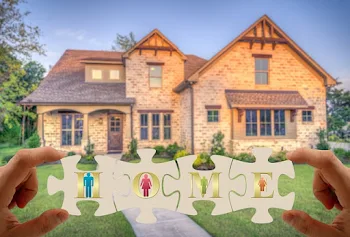Exploring Cultural Attitudes Towards Yards
Lawns are a common sight in many societies, particularly in Western cultures. However, the concept of a lawn as we know it today is a relatively recent development, dating back only a few centuries. In reality, lawns are not a natural landscape feature; they are a social construct, shaped by cultural attitudes towards yards and outdoor spaces.
Historically, yards were used for practical purposes such as growing food, raising animals, and drying clothes. It wasn't until the 17th century that lawns began to emerge as a status symbol for the wealthy. The earliest lawns were carefully tended patches of grass that were used for social gatherings, sports, and other leisure activities. Over time, lawns became more common and accessible to the middle class, and they evolved into the expansive, immaculately maintained landscapes that are so ubiquitous today.
The idea of the perfect lawn became ingrained in the cultural consciousness and was reinforced through advertising and media. In the mid-20th century, the post-war era saw the rise of suburbanization and the American Dream of homeownership. The idea of the perfect lawn was promoted as a way to show off one's property and to fit in with the social norms of the time. This led to the development of lawn care companies, the proliferation of lawn care products, and an increased focus on lawn maintenance.
This cultural attitude is reinforced by media portrayals of the perfect lawn, which are often associated with affluence, cleanliness, and social status.
However, this ideal of a perfect lawn comes at a cost. Maintaining a lawn requires significant resources, including water, fertilizer, and pesticides. Lawns also contribute to environmental issues such as soil erosion, water pollution, and habitat loss for wildlife. Despite these drawbacks, many people continue to prioritize the appearance of their lawns over environmental concerns.
Moreover, the cultural attitude towards lawns can also reflect deeper social constructs and issues such as classism, racism, and colonialism.
The cultural attitude towards lawns and landscaping can reflect deeper social constructs and issues such as classism, racism, and colonialism. In many communities, having a well-manicured lawn is associated with social status, while unkempt lawns are often seen as a sign of neglect or lower class. This attitude can perpetuate existing social inequalities and marginalize certain groups of people.
For example, in the United States, the ideal of a perfect, manicured lawn has roots in European landscaping traditions brought over by early colonizers. However, these traditions were not easily achievable in certain regions with different climates and soil types, such as those inhabited by Indigenous peoples. As a result, the cultural ideal of a perfectly manicured lawn can be seen as an extension of colonialism, where European values and practices are imposed on other cultures.
Furthermore, the cost and time required to maintain a perfect lawn can be a barrier for many lower-income households, perpetuating classism. Wealthier communities are often better able to afford the resources necessary to maintain a well-manicured lawn, such as lawn care services, expensive equipment, and water resources. This perpetuates the association of a perfect lawn with social status and can make lower-income households feel marginalized or inadequate.
The cultural attitude towards lawns can also intersect with issues of race. For example, in predominantly white neighborhoods, homeowners may feel pressure to maintain a perfectly manicured lawn to fit in with their neighbors and uphold a certain cultural ideal. However, in predominantly non-white neighborhoods, there may be less emphasis placed on maintaining a perfect lawn, leading to stereotypes of neglect or a lack of pride in the community.
HOAs
HOAs, or homeowners associations, are organizations formed by property owners in a particular neighborhood or community to help maintain and manage the shared areas of the community, such as the landscaping and other common areas.
Some HOAs have strict rules and regulations regarding the appearance of individual properties within the community. This can include requirements for maintaining a well-manicured lawn, with specific guidelines for the height of the grass, frequency of mowing, and other related factors.
If a property owner fails to meet these requirements, they may be subject to fines or other penalties imposed by the HOA. These fines can be significant, and may even escalate if the homeowner continues to violate the rules.
The rationale behind these rules is to help maintain property values and create an attractive, cohesive aesthetic throughout the community. While some people may feel that the rules are overly strict or burdensome, others appreciate the benefits of living in a well-maintained and visually appealing neighborhood. This is of course, insane. Anyone willing to live in an area like this and pour their money into such nonsense deserves to lose their money. HOAs are the enemy of good stewardship towards the environment. Some HOAs prevent you from growing plants other than their approved list of things…which probably only includes grass. Tomatoes on a vine? Nope. HOAs suck and should be illegal.
Outside of the US


No comments:
Post a Comment